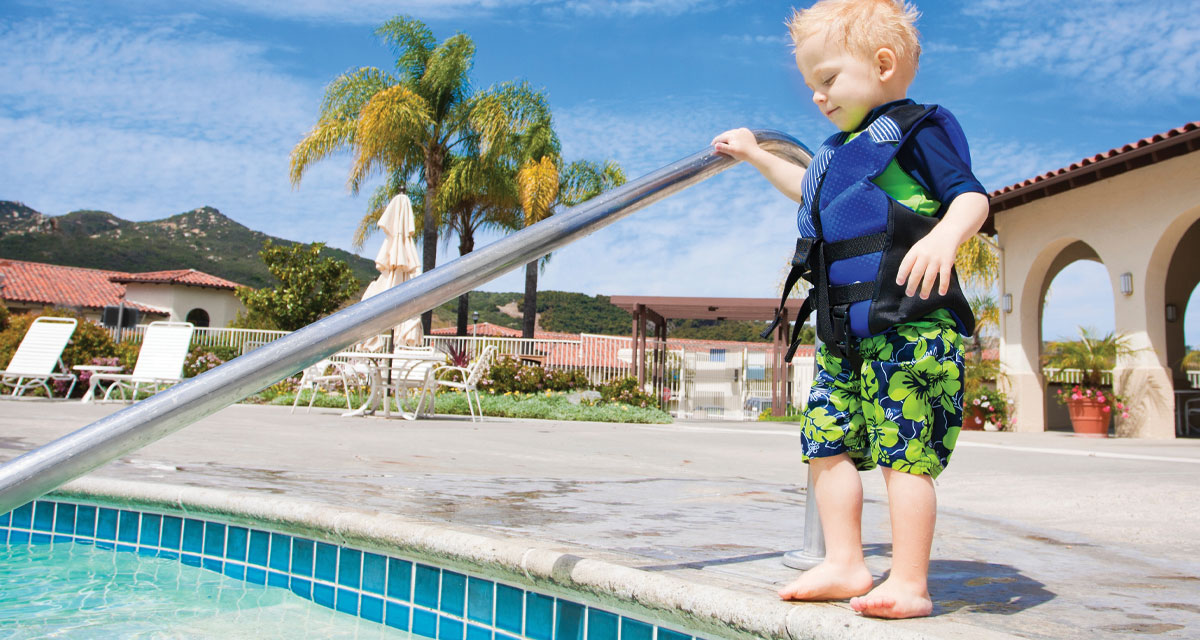Each month this series will provide important facts and tips surrounding child safety in an effort to support parents and caregivers as they navigate reducing risks and creating the safest environment possible for the children in their lives.
Did You Know that May is National Water Safety Month?
The national awareness campaign to help families and communities prioritize water safety is coordinated by the Pool & Hot Tub Alliance, with support from the American Red Cross, National Recreation and Park Association and World Waterpark Association. Their mission is to shine a light on water awareness and swim safety by making education and resources available to the public.
Whether the children in your life are swimming, participating in aquatic activities, visiting a water park or any other water-related activity this month, we’re sharing some helpful tips to spread awareness and increase safety protocols for your loved ones.
Understanding the Risks
The National Drowning Prevention Alliance (NDPA) has stated, “According to the CDC, drowning is the leading cause of unintentional injury deaths for children 1-4 years, the second leading cause of unintentional injury deaths for children 1-14 years old and is the fifth-leading cause of unintentional injury deaths for all ages in the United States. Water-related injuries also affect a significant number of American children. An estimated twenty percent of drowning victims suffer severe, permanent, neurological disability.”
While these statistics can be sobering, it’s important to remember that drowning and other water-related injuries are preventable.
Layers of Protection for Water Safety
Keeping children safe isn’t about just one protective measure, but partnering them in layers to make sure you have every opportunity possible to avoid an incident.
Here are a few different layers of protection to establish in your own home and with your families.
- Water Competency ̶ Teach swimming skills for different stages and increase water smarts, helping kids know what to avoid outside of their swimming skills and what to do in case of a water-related emergency. The American Red Cross states that, “Children, inexperienced swimmers, and all boaters should wear U.S. Coast Guard-approved life jackets.”
- #BeWaterAware ̶- Engage children on topics about water safety to ensure the message is getting through to them, at all stages of childhood. (You can find a free printable coloring book and educational videos just for kids on the National Water Safety Month website!)
- Adult Supervision ̶- Having responsible, intentional eyes on your children at all times is key to ensuring their safety around water, especially those who cannot swim or are not yet proficient swimmers. Adults, parents, caregivers should all be fully aware of potential water dangers at home, when visiting someone’s home, or traveling on vacation.
- Physical Barriers ̶- Invest in fences and gates around pools, hot tubs, and spas, as this is the first line of defense (outside of supervision). This preventive restricts accidental exposure to the water for children. Latches and doors are physical barriers that aid in the possibility of access, as well. Adding an alarm system to doors and pool access is a great additional barrier!
- CPR Certification ̶- Learn to recognize the signs that someone is in trouble in the water. The NDPA encourages adults to prioritize CPR, First-Aid, and rescue knowledge in the event that something goes wrong and these measures are needed to save a life.
Taking Immediate Action if Injury or Accidents Occur
According to the American Red Cross, should a child exhibit signs of a water emergency you should rescue and remove them from the water immediately, without putting yourself in danger. Immediately begin rescue breathing, and CPR, or find someone immediately nearby who can. If you are unsure about the severity of an incident or injury, don’t wait to have someone call 911 or Emergency Medical Services (EMS). If you are alone, provide at least two minutes of care, then call EMS.
Always have a First-Aid kit easily accessible, as well as any important documents, such as lists of medications your child is currently taking and phone numbers for contact information for pediatricians and emergency contacts.
Helpful Resources to Learn More
- The National Water Safety Month website – nwsm.phta.org {ONLINE ARTICLE HYPERLINK: https://nwsm.phta.org/ }
- The American Red Cross – www.redcross.org {ONLINE ARTICLE HYPERLINK: https://www.redcross.org/about-us/news-and-events/news/water-safety-month-how-to-be-safe-in-and-around-the-water.html#:~:text=May%20is%20National%20Water%20Safety,your%20family%20becomes%20water%20competent.}























